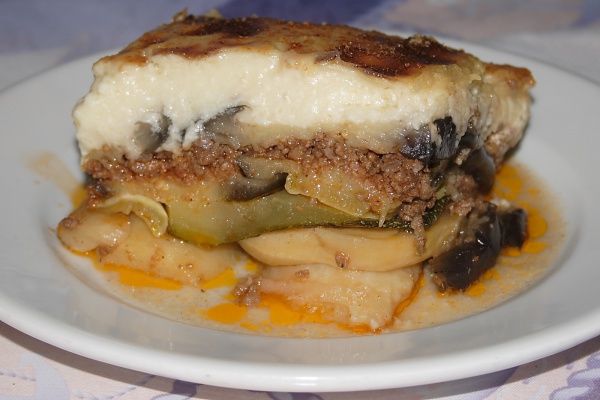Facts About Moussaka
Moussaka is a cherished dish in various regions worldwide, including the Levant, Middle East, Greece, and the Balkans. Each region offers its distinct take on the recipe. The Greek version, familiar to many in Europe and the Americas, was popularized by Nikolaos Tselementes in the 1920s. This version typically features layers of eggplant and meat, crowned with a creamy topping made of a milk-based custard or béchamel sauce. In Greece, moussaka is always served hot and baked to perfection.
In Turkey, a similar dish called musakka incorporates thinly sliced fried eggplant combined with a tomato-based meat sauce and is usually served warm or at room temperature. Meanwhile, in Arab countries, moussaka can be enjoyed either cold or hot.
The English word "moussaka" derives from the Greek "mousakás" borrowed from Ottoman Turkish and ultimately from the Arabic word "musaqqa‘a." The dish has its roots in the Levantine musakhkhan.
Different regions prepare moussaka in various ways. In Greece, the dish commonly includes sautéed eggplant, minced lamb, and a thick béchamel sauce, all baked in layers. Some versions might incorporate different vegetables or be adapted to be vegan, excluding meat and dairy.
In the Levant, moussaka bears some resemblance to Sicilian caponata, featuring tomatoes, eggplant, and sometimes chickpeas. It can be served either cold or hot. In Egypt, moussaka is prepared with fried eggplant and tomato sauce mixed with seasoned ground beef, often served chilled.
The Turkish musakka is made with fried eggplant in a tomato-based meat sauce, often accompanied by green peppers. In the Balkans, including Albania, Bulgaria, the former Yugoslavia, and Romania, moussaka might replace eggplant with potatoes and often includes a top layer of milk or yogurt mixed with raw eggs. These versions might use pork or beef mince and feature a custard-like top layer.

 Serbia
Serbia